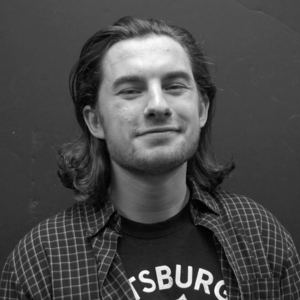Movie adaptions usually don’t live up to their novel
/ The Daily Orange
You don’t have to be a reader to understand the fact that most onscreen adaptions of books aren’t up to snuff when compared to the text. Similarly, you don’t have to be a horror fan to find the thrills in “The Girl on the Train” effective.
Although I’m not too familiar with Paula Hawkins’s novel by the same name, I can definitely see how fans would be miffed about the fast-paced mystery coming in at just under two hours of screen time.
The novel “The Girl on the Train” rose quickly to popularity. After sitting in the number one spot on the New York Times best-seller list for 13 weeks, readers told their friends about the book, word of mouth keeping it popular for that long.
Now that the movie is out, fans of the story will definitely flock to theaters to see it, but it is important to keep in mind that movies sometimes have trouble building the same drama their longer literary counterparts generate.
Some obvious examples of this phenomenon are the film versions of literary classics like “The Great Gatsby,” “Charlie and The Chocolate Factory,” and “The Lord of the Rings” trilogy. All have critically proved to be short of the stick, despite the cash poured into each project.
Scott Fitzgerald’s “The Great Gatsby” paints American realism in the eyes of Nick Carraway, serving as Fitzgerald’s vessel to criticize the emptyyetexcessive abundance of the roaring twenties. While “Gatsby” has had runs both on the stage and the screen, the 2013 installment of this American literature classic stars Leonardo DiCaprio as the films’ title character, with Tobey Maguire as Nick. Director Baz Luhrmann, in his characteristically opulent style, did anything and everything to do the novel justice.
From computer-generated imagery sequences zipping around in Gatsby’s yellow whip, to experimental shots of Maguire’s doughy depression, there’s something a bit contrived about the whole thing. The narrator aspect of Luhrmann’s adaption is just awful, and really clutters an otherwise straightforward storyline. The Baz pulled out all the stops to bring Gatsby to life. Even though DiCaprio’s Gatsby was stellar, the movie missed the mark in several places.
Other film adaptions of Gatsby have flopped as well, including the 1974 version, the 2000 TV-movie version with Paul Rudd as Nick, and even a 1949 version isn’t rated well on IMDb.
In a way, “Gatsby” is one of those books whose theme is just a little too hard to convey on screen. More than anything, ”Gatsby” focuses on the slippery slope of high expectations, which only spells doom for adaption. You can’t film “Gatsby” well because you can’t film disappointment.
Children’s author Roald Dahl has had a lot of his novellas turned to movies, including “Fantastic Mr. Fox,” “James and The Giant Peach” and “The BFG.” Perhaps his most popular work to be brought to theaters is “Charlie and The Chocolate Factory.” The 2005 adaptation starring Johnny Depp is probably more familiar to most college students, but the 1971 “Willy Wonka and the Chocolate Factory” with Gene Wilder also was a cinematic success.
The 1970s version is way better, and actually sticks more closely to the book in terms of the character’s relationships, tone and ending. The 2005 adaption is, in all honesty, corny. The Oompa Loompa songs are cringe-worthy. Johnny Depp in whiteface might actually be creepier than Johnny Depp as Edward Scissorhands. I guess he’s kind of a creepy guy, but either way he’s nothing like the critically acclaimed Wilder as Wonka, and even less Wonka than the way Dahl portrays him in the book.
“Charlie” proved to be a box office smash, bringing in close to $500 million worldwide, but the Tim Burton creation ultimately makes Wonka look like a trippy adventure through Candyland, instead of a story of rewarding character and integrity.
By far the most celebrated work on this list is “The Lord of the Rings” trilogy. This is not to be confused: I am by no means trashing these movies. I love all three equally. I am a huge nerd. I love hobbits and goblins and magic and all that.
But for the most part, Peter Jackson’s massive efforts to bring J.R.R. Tolkien’s fantasy epic to the big screen — despite being truly gigantic in terms of scope, and despite pacing itself over three lengthy movies — still fails to truly capture Tolkien’s majesty.
The story is absolutely epic, but so much is left out of the three movies to make time for battle scenes. And don’t get me wrong, I love battle scenes. But I love Tolkien’s careful character building and patient plot progression in “The Lord of the Rings.”
The movies are plenty magical, but part of the magic of Middle Earth is how detailed each aspect of Tolkien’s universe is as it’s presented in the books. From elves to orcs to talking trees, everything has a past, present and future, which in the book feels almost historical. The movies take away from the collage aspect, with Middle Earth presented as a giant, colorful, multi-cultured universe, setting the stage for a complex and dynamic world. I know people think the movie is equally rich in detail, but the level of imagination in reading the books essentially makes “The Lord of the Rings” not filmable.
All that being said, excited moviegoers should be mindful that the book version of “The Girl on the Train” might be better than what they see on the silver screen. Get excited, but not too excited.
Brian Hamlin is a junior communications and rhetorical studies major. His column appears weekly in Pulp. He can be reached at brhamlin@syr.edu.
Published on October 16, 2016 at 9:53 pm





